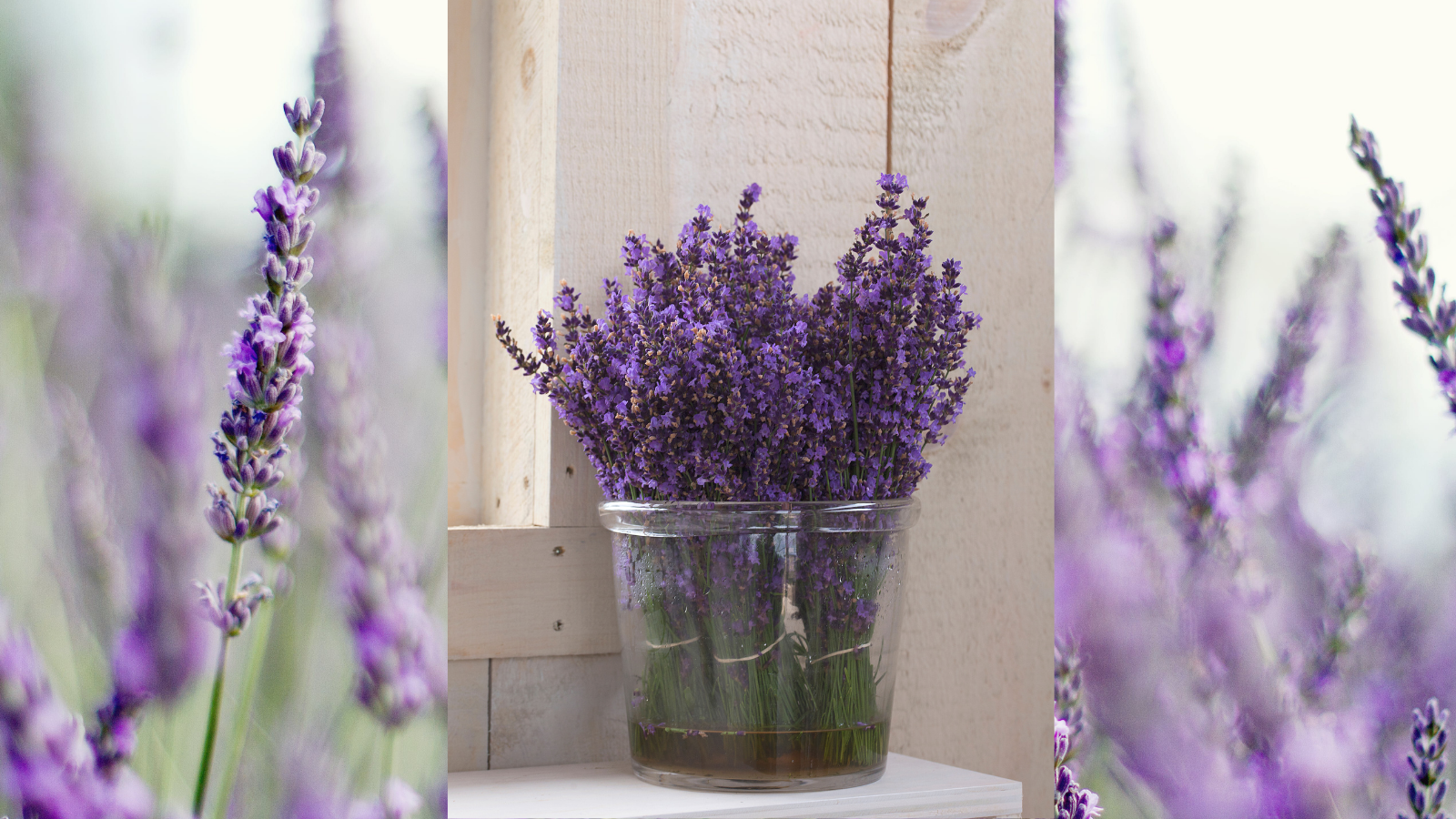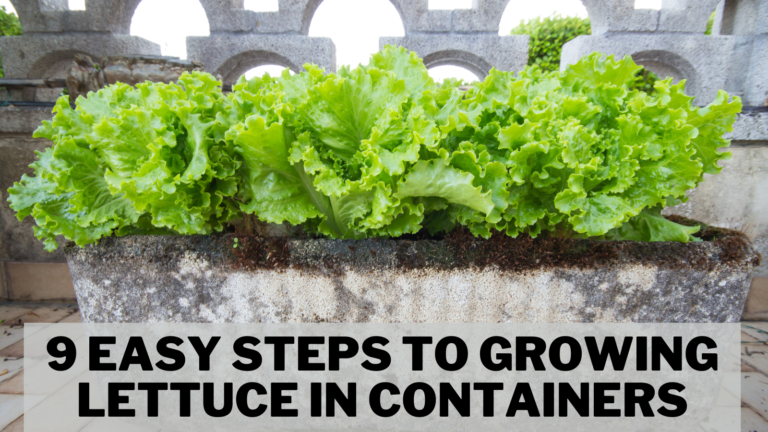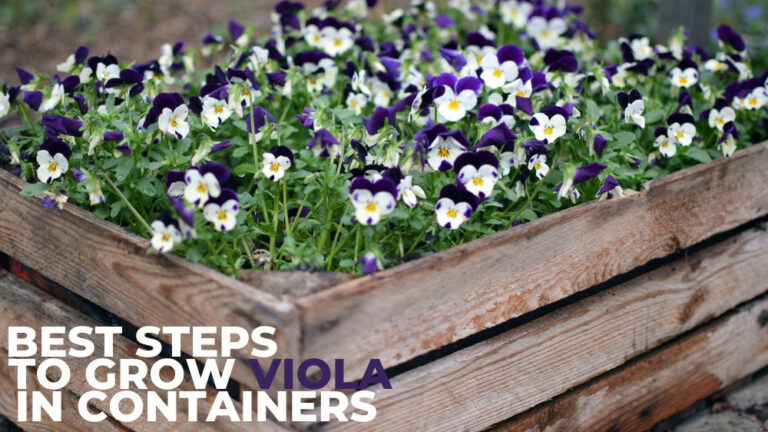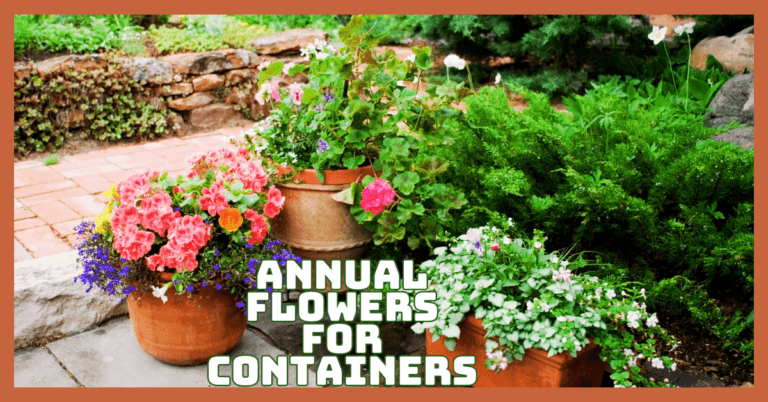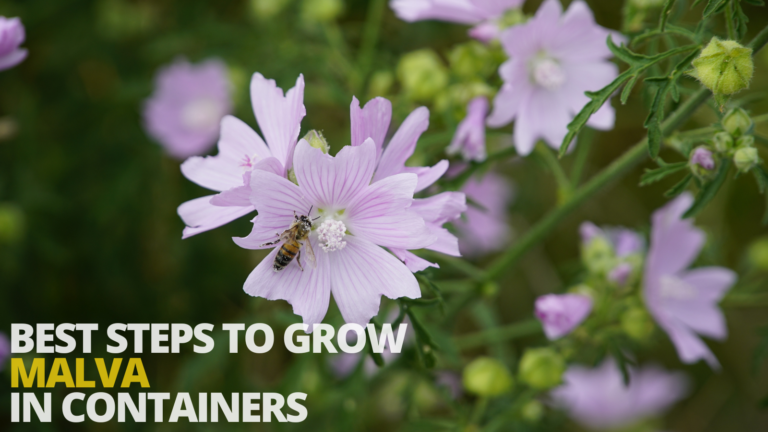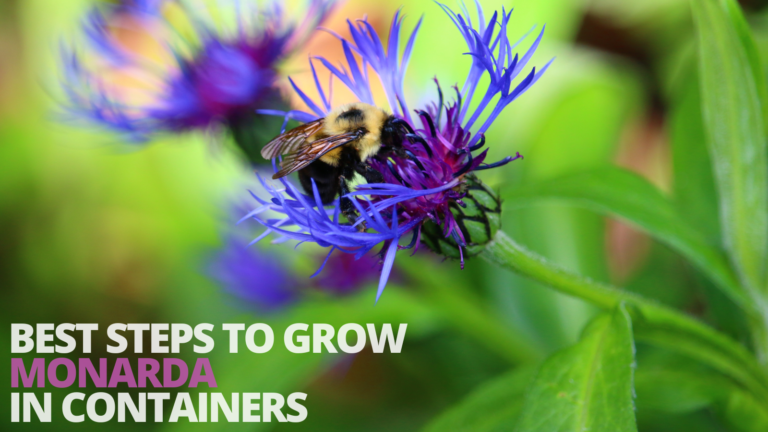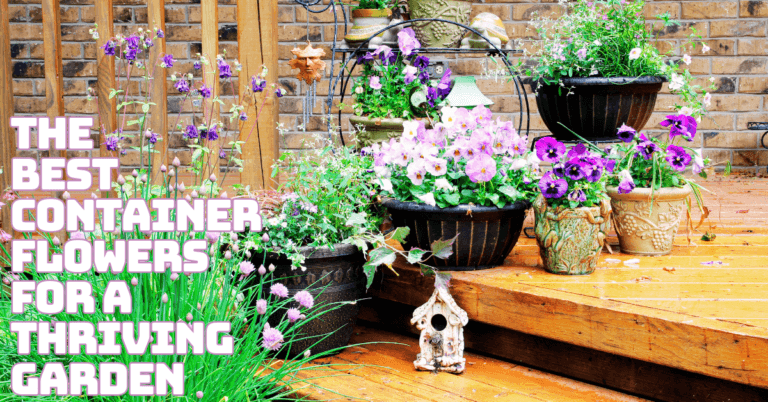Easy Tips To Grow Lavender In A Container
Easy Tips To Grow Lavender In A Container
Grow lavender in a container is a beautiful way to decorate your house with colour and aroma. The plants can be grown indoors, in containers or in hanging baskets.
The steps you need to know are outlined in this blog post so you may grow gorgeous, entire containers of lavender that you can use all year long.
It takes some expertise to cultivate lavender in pots successfully, but we have all the advice you need. Let’s try to grow lavender in a container.
History Of Lavender
Over 2500 years of use of lavender are known. The ancient Egyptians utilized lavender as a perfume and for mummification.
The term lavender comes from the Latin verb lavare, which means “to wash,” and was used by the Romans for cooking, bathing, and air freshening.
Additionally, the Romans transported lavender oil throughout the Roman Empire and utilized it in soaps.
“Lavenders” were women who performed washing for pay in Medieval and Renaissance France. On lavender bushes, clothes were spread out to dry after being washed in lavender.
Drawers were scented with lavender and used to smell the air, treat wounds, and prevent infection.
Lavender was used by the Ancient Greeks to treat back pain and insomnia. In the 17th century, lavender was also used to treat the Great Plague in London.
Glove producers in France who had permission to use lavender to scent their products during the 16th century avoided cholera.
At the royal table and all over her home, Queen Elizabeth of England demanded fresh lavender flowers and lavender preservation.
In the 19th century, England's Queen Victoria developed an interest in lavender, leading to English lavender.
The famous lavender firm, Yardley's of London, was used by both monarchs and the Victorians in their gardens.
Lavender is undoubtedly a mystical plant with a lovely smell and healing properties. Cultivating is pretty simple because it needs full sun and sufficient drainage.
Lavender is a very resilient plant that can withstand even being neglected. The majority are adaptive and, once established, prefer to grow in rocky soil with a high pH and, ideally, in drought-like conditions. They dislike having “wet feet.”
The best outcomes will be obtained by using seedlings rather than seeds. Pick from a wide variety while considering your growth environment, soil, and climate.
Health Benefits Of Lavender
Lavender is now more than simply a pretty flower. It turns out that this herb is frequently utilized for therapeutic and medical purposes.
Here are some possible health benefits of utilizing lavender if you have a few medical difficulties and don't want to change the nasty side effects of many over-the-counter and prescription medications.
1. Improve Sleep
Insomnia is a persistent issue that causes you to toss and turn all night long. Caffeine withdrawal and more activity may promote sleep.
However, occasionally both these endeavours and other cures fail. As a result, you become a sleepy mess during the day.
If you're willing to try anything to get a good night's sleep, a study found that lavender essential oil was an effective treatment for improving the sleep quality of intensive care unit (ICU) patients who had trouble sleeping. The study was published in March 2017 in the British Association of Critical Nurses.
Put a few drops of lavender essential oil on your pillow before bed tonight if you've tried other sleep cures without success.
Just be careful not to consume it or any other essential oil because doing so could harm your health.
2. Help Treat Skin Blemishes
Many essential oils, including lavender, are fantastic for use in dermatology.
According to a study published in May 2017 in the journal Evidence-Based Complementary and Alternative Medicine, using lavender oil on inflamed skin may help heal blemishes and reduce inflammation if you have acne, eczema, or other skin conditions.
Dilute the essential oil with water or carrier oil if you have sensitive skin. Lavender's antioxidant properties may aid in the recovery of wounds.
Before including lavender in your skincare routine, check with your dermatologist to ensure it won't mix with any of the medications you're already taking.
3. Reduce Blood Pressure And Heart Rate
The additional stress that chronic high blood pressure places on the heart raises the likelihood of health issues, including stroke and heart attack.
However, a small study found that after open-heart surgery, 40 people who inhaled lavender essential oil experienced lower blood pressure and heart rates, suggesting that the oil positively impacted their vital signs.
The study was published in the Iranian Journal of Pharmaceutical Research in 2017. The authors state that additional study is required to confirm this potential advantage, specifically a randomized controlled trial with a bigger sample size, which is the gold standard in medical research.
4. May Offer A Natural Remedy For Pain
Some people turn to over-the-counter painkillers when dealing with acute or chronic pain. You might ask your doctor for a prescription if the pain is severe enough.
Try aromatherapy with diluted lavender essential oil in water at a 2 percent concentration before resorting to more conventional pain relief methods.
According to one study, lavender works well as a postoperative pain reliever.
Because the oil contains linalyl acetate and linalool, two anti-inflammatory compounds in many essential oils, it can relieve pain.
Polysaccharides are also present in lavender. Another study found that plants containing these compounds are “the most potent in healing inflammatory disorders,” which include arthritis and rheumatism. This study was published in the journal Phytotherapy Research.
According to other research, lavender aromatherapy may be used to lessen the severity but not the duration of the discomfort while in labour.
5. Could Relieve Asthma Symptoms
Lavender's anti-inflammatory properties could help in bronchial asthma.
According to a mouse study published in the journal Life Sciences in July 2014, lavender essential oil improves respiratory health by reducing allergic inflammation and mucus hyperplasia. It's uncertain whether the same result would occur in people.
6. Lessens Menopausal Hot Flashes
Many women experience hot flashes, typical menopausal symptoms. It generates a sudden sensation of heat throughout the body, and it might cause flushing and perspiration.
However, a study published in September 2016 in the Journal of Chinese Medical Association suggests that using lavender aromatherapy for 20 minutes twice daily may help lessen menopause flashing and enhance the quality of life.
7. Help Combat Fungus Growth
Numerous research has also highlighted lavender's potential antifungal properties.
According to studies, the lavender essential oil may help prevent the growth of some fungi, including Candida albicans.
According to prior studies, the oil may also be used to treat ringworm and athlete's foot, two conditions also caused by fungus.
8. Potentially Promotes Hair Growth
A thicker dermal layer and more hair follicles were observed in mice whose backs were treated with lavender essential oil once a day, five days a week, for four weeks.
This leads scientists to hypothesize that lavender might effectively encourage hair growth, though more research is required. You aren't a mouse, after all.
Types Of Lavender
Lavender (Lavandula), a plant with 39 distinct species that is incredibly popular, is grown in temperate regions as either an attractive plant for the landscape or the extraction of essential oils.
This perennial or herb, a sun-lover, thrives in well-drained soil, is tolerant of drought, and is resistant to pests and diseases.
Varieties differ in colours, flower or leaf forms, bloom seasons, and hardiness. To grow lavender in a container, ideally, you should know the best container varieties.
1. English Lavender
The scientific name for English lavender is Lavandula angustifolia. It is one of the most popular varieties of lavender in part because it is hardier than other species, and for this reason, it is referred to as “English” rather than “British” because it may grow there.
2. Alba Nana Lavender
Since it is so small, this “dwarf dawn” species of English lavender—as its name implies—is ideal for pots, patio gardens, and terraces and will combine its lovely candid and white blossoms with the world's most calming aroma.
3. Munstead Lavender
This kind of English lavender was first introduced in 1916 by Gertrude Jekyll, who had “noble” gardening roots—royalty, to be exact!
It is a lavender cultivar with a compact habit and clearly defined flowers with five petals and a light pinkish-purple colour.
Naturally, after hearing the name Gertrude Jekyll, you'll assume that this lavender type is perfect for borders, and it is.
However, it will also work well in herb and rock gardens, which will spruce up with its calming perfume.
4. Pink English Lavender
This cultivar, ‘Rosea,' will add a profusion of pale pink (and occasionally off-white) blossoms to English lavender's potent yet relaxing aroma.
It is among the lavender genus's most prolific bloomers. This makes it ideal for romantic hedges and borders in any casual garden style.
5. Folgate Lavender
With its traditional dark purple flowers, this lavender cultivar is widely recognized for its generosity and the dense blooms it will produce in the spring.
The inflorescences are typical for an English lavender variety, but ‘Folgate' will produce many!
Therefore, this is a plant you can reliably rely on to brighten up your garden with a richness of colour that can truly make a difference. It also makes a great filler of colour and scent to borders, hedges, and beds.
6. Spanish Lavender
Gray-green foliage and dark purple flower heads are features of the fragrant blooming plant known as Spanish lavender (Lavandula stoechas).
Spanish lavender, also known as French lavender, grows in evergreen mounds and attracts pollinators from mid-spring through late summer when it blooms.
Bracts on Spanish lavender bushes that resemble rabbit ears are present in the flowers. White or pink flowers can be found in some varieties.
7. Thumbelina Leigh Lavender
The inflorescences of the English lavender variety known as “Thumbelina Leigh” are short and thick and contain fewer flowers than other varieties, giving them a unique gardening and aesthetic value.
They will appear at the tops of protruding stems, rising above the leaves as violet purple plump plumes.
Due to its less “wild” appearance, this lavender mora is suitable for less formal gardens than other species, as well as containers and flower beds where you want the blossoms to stand out.
8. Little Lottie Lavender
Little Lottie is a touch “different” from her sisters if you're looking for a pleasantly bold type of English lavender since the blooms have two colours: some are white.
Some are light magenta, combined in the inflorescences to create a range of pure and delicate sentiments.
Because of this, “Little Lottie” was given the Award of Garden Merit by the Royal Horticultural Society in 2002, making her one of the most widely used English lavender cultivars for pots and containers.
9. Royal Velvet Lavender
This cultivar of English lavender produces spikes with an erect habit that can reach a length of 4 inches (10 cm).
The long-lasting, deep, dark navy blue to dark violet blossoms of “Royal Velvet,” which also have a velvety texture, distinguish this plant.
Few other flowering plants can match “Royal Velvet's” depth of colour, sensation, and richness of perfume in borders, hedges, flower beds, and containers.
10. Anouk Lavender
‘Anouk' is (one of) the showiest of all the French lavender kinds because the enormous ears at the top of the inflorescences make it stand out.
They are large enough to see their veins and are an extraordinarily brilliant and lovely shade of pink.
The inflorescence-bearing stems have an upright habit, and the aromatic leaves also feature ears that protrude from the foliage like bunnies peeking out of the grass.
A highly persistent bloomer looks much better when it draws butterflies. It is ideal for borders, hedges, flower beds, patios, and terraces.
Grow Lavender In A Container
Growing lavender in pots is a beautiful way to decorate your house with colour and aroma. The plants can be grown indoors, in containers or in hanging baskets.
The steps you need to know are outlined in this blog post so you may grow gorgeous, entire containers of lavender that you can use all year.
It takes some expertise to cultivate lavender in pots, but we have all the advice you need. Hope these tips will help you grow lavender in a container successfully.
Container Requirements
While lavender may be planted outdoors in a garden or other outdoor space, it thrives in containers.
The plants can grow from 12 to 18 inches tall in the right conditions. Lavender may undoubtedly be grown in containers. Here is a lavender plant in a tiny planter that has not yet blossomed.
Lavender plants should mature in 90 to 200 days and need full sun to flourish. When planting your lavender, it's critical to pick the appropriate container.
You should look for a container with sufficient drainage. Regular watering is necessary for lavender, but avoid overwatering it and let the plant air dry in between applications.
Keep a saucer under your container if you intend to keep your lavender indoors.
Ensuring your plants receive eight hours of direct sunlight each day might be challenging, depending on where you live and the weather.
The appropriate conditions allow the plants to flourish since they enjoy being warm.
These plants can't survive a cold winter outdoors since they thrive in the heat. The advantage of keeping your lavender in a pot is that you may move it quickly to better surroundings.
If you keep your lavender outside during the summer, you may bring it inside when the weather gets colder.
Soil To Grow Lavender In A Container
No matter how big or tiny, lavender plants need a soil mixture with grit and excellent drainage.
The soil should not be perfect, but it should be alkaline, reasonably fertile, and adequately aerated.
A drain mix helps prevent root rot, which can happen to lavender. I enjoy adding compost and worm compost to container plants as natural fertilizers.
If you're growing your lavender indoors or in a more humid area, omit the topdressing because lavender doesn't like to be covered in mulch or compost.
This is the mix with approximate measurements:
- 3 parts potting soil (this, along with a bit of compost, adds richness)
- 1 part clay pebbles (these aerate & up the ante on the drainage)
- 1 part pumice (ditto on the above)
You can throw in a handful of compost when planting and topdressed with ¼′′ of worm compost. You can adjust this blend to suit your climate.
Alternate mixes:
- 1 part potting soil / 1 part horticultural sand
- 1 part potting soil / 1 part pumice or perlite
- 1 part potting soil / 1 part OK rock
Lavender thrives in alkaline soil, devoid of organic debris and well-drained. However, with time, the soil becomes compacted, which causes poor drainage and numerous issues.
Avoid using topsoil that has been bagged or soil from your garden to fill your pots.
By using a suggested “soil-less” blend that will maintain moisture and resist compaction, you can spare yourself the trouble associated with soil-based media.
Another option is organic potting soil. Your lavender will stay strong and healthy throughout the growing season because of the balanced, delayed-release, and consistent nutrient delivery in most commercial potting mixes.
Sunlight To Grow Lavender In A Container
Lavender in a pot needs full sun, so be sure to set the pot where there will be enough sunshine.
The sunniest southern-facing window or a grow light is the best location for indoor lavender plants. In your yard, include them in areas with at least 8 to 10 hours of direct sunlight.
Maintaining the ideal temperature, sunlight exposure, and water level are the three major components of lavender container maintenance.
Fortunately, none of these requires much effort. Place your lavender plants growing in containers that receive whole light (at least eight hours per day) and give them minimal water.
Water Requirements
Lavender is a drought-resistant herb that has to be watered only when the roots' soil has dried.
Lavender should be watered thoroughly, allowing excess water to drip from the pot's base. After the soil has dried, lavender should be watered once more.
If your lavender plants are dying in pots, several potential causes include over- or under-watering, unsuitable soil, insufficient water or sunlight, and fertilizer demands. Once more, lavender in pots may suffer from chilly weather.
Under typical circumstances, potted lavender plants must be watered once every two weeks.
Even if it has been raining in the last two weeks, I advise watering lavender plants in pots since they dry out more quickly because they are above ground.
Lavender is drought-tolerant, so mature plants don't need constant watering like other garden plants.
Lavender wants whole light to produce the most excellent blooms, oils and smells. They may become susceptible to root rot and fungus if they receive too much water.
Young lavender plants must be watered frequently (either by irrigation or adequate rainfall) until they become established.
Temperature & Humidity
Use granular, porous soil and little water. Maintain wintertime lows of 40 to 50°F (4.5°-5°C), with only 5 to 10°F more during the day.
Pots may be left out in the sun during the summer. Lavenders need a chilly, but not drafty, winter climate; at night, the temperature can drop as low as 40°F (5°C), and during the day, it shouldn't rise above 65°F (18°C).
You should keep them away from heaters because they will dry them out and drafty windows because they can get too cold.
The plant is from the Mediterranean, where spring and early summer temperatures typically range from 68° to 86° Fahrenheit (20° to 30° Celsius).
After harvest, growth and regeneration are favoured when the soil temperature is over 65°F (18°C).
The plant, though, can unquestionably withstand lower temperatures as well. French and Spanish lavenders cannot survive outdoors in locations that experience frost throughout the winter.
They must be taken within for protection, while English lavenders can survive winter in pots and tolerate frosts and cold temperatures.
Planting
Make sure the container you choose gives your lavender room to develop. A 12 to 16-inch (30 to 40-cm) pot will do.
Ensure the bottom has a hole at least ½ inch wide. Pour in some pebbles for quick drainage.
Fill the pot ¾ full with an excellent, sandy potting mix that quickly drains water. Incorporate a tablespoon of lime. Place your lavender plant in the pot after filling it with soil a few inches below the top.
Firm the soil to remove air pockets. The crown of your lavender plant should protrude around 2 cm (1 inch) above the ground. Thoroughly maintains moisture; add a 2-inch (5 cm) thick layer of mulch.
Lavender needs at least six hours of direct sunlight each day. Growth and scent are decreased by shade. Put your container in the wind- and sun-sheltered area that receives plenty of sunlight.
Propagating
You need a few inches of the delicate stem to harvest lavender plant cuttings.
Cut the stems below where they meet the bottom leaves, then put them in a jar or container with water. Put the lid on loosely to allow some air to escape while preventing pests from getting inside.
Water these frequently slips until they begin to grow roots. Plant the cuttings in your containers when the roots are at least 2 inches long.
Remember that each potted lavender plant needs at least 1 square foot of area to allow proper air circulation.
Once it has taken root in its new potting soil, give it regular watering and fertilizers as required.
Pruning
Your lavender shrub won't become woody if you prune it. This is crucial since woody plant components do not continue to grow new lavender stalks.
Once a year, pruning is ideal. Better pruning is done twice a year. Never cut into the woody section of your lavender while pruning it.
Always be careful to leave the wood that doesn't have leaves on it, as chopping it could harm the plant.
Pruning two leaf sets above the woody section is an excellent general rule. As a result, the lavender plant will grow steadily and get stronger and thicker.
Always use pruning shears or secateurs that are extremely clean, dirt-free, and bleach-disinfected.
Taking this precaution can prevent bacterial diseases from infecting your lavender plant. To ensure a clean cut that heals quickly, you should also ensure the shears are very sharp.
Although trimming in the spring can prevent flowers from blooming, it is an excellent time to remove any dead or broken branches.
As the new growth starts, prune your lavender plants, cutting back just enough to leave a few new shoots at the base of each branch.
After the last flush, prune your lavender stems to an inch above the wood in late summer or early fall. The airflow will be improved as a result.
Fertilizer
Utilize a balanced, water-soluble, delayed-release fertilizer to feed your lavender once per week. As an alternative, you can use compost tea or fish meal emulsion.
Alfalfa pellets, a slow-release organic food containing triacontanol, a growth stimulant, are used by some gardeners and are effective.
Overfertilizing lavender can be harmful. Lavender shouldn't be fertilized excessively because this will just hurt the plant.
Avoid applying fertilizer in the fall since the plant will produce delicate new growth that will die in the winter.
The ideal fertilizer is a low-nitrogen one designed to promote blooming. However, diluted general-purpose fertilizer will also work.
Only fertilizing with a 7-9-5 or 15-15-15 fertilizer in the spring and summer, according to Logee's Plants, is advised. Drain the water after filling the hole.
Lime should be added to acidic soil because lavender prefers a higher pH or alkaline soil. If organic, use kelp, bone meal, or blood meal fertilizer. Don't overwater your plant, please.
The best and most straightforward thing is to surround the plant with an inch (2.5 cm) of high-quality compost.
This ought to supply enough nutrition for the upcoming year. As an alternative, you might give your lavender a little slow-release fertilizer.
Pests & Diseases Of Lavender
Although diseases do not frequently harm lavender plants, cold, moist soils can lead to a fungal infection.
Your lavender plant likely has root rot if it displays symptoms like yellow, wilting, or dead leaves and discoloured root tissue.
By minimizing the number of times you water the crop, you can manage this illness, which overwatering plants bring on.
Although lavender can put up with most pests, this does not mean it is entirely immune to them. Lavender plants have a solid attraction to white flies.
Although they might not kill your plant, they usually inflict unsightly harm to your crop as they feed on the sap from the undersides of the leaves.
Whiteflies can be eliminated manually or with the help of a mighty stream water spray designed specifically for adult white flies.
Whiteflies can be kept from mulch using reflective mulch or aluminum foil.
Harvesting Lavender
Early morning is the optimum lavender harvest since the blossoms will dry with the most aroma oils.
When the lowest blossom opens, trim the stems just above the first set of leaves because the colour will be more vibrant when dried.
The plants can flower up to three times in one summer. The more blooming stems your clip, the more growth you encourage.
Gathered lavender should be tied into bundles and left to dry upside down in a warm, dark area.
Conclusion
Beautiful and fragrant, lavender plants do best in warm, dry areas.
They occasionally require more care to thrive and produce the blossoms you want because not all conditions are ideal.
Feel free to comment here if you need help growing lavender in a container.
I trust you enjoyed this article on the Easy Tips To Grow Lavender In A Container. Please stay tuned for more blog posts to come shortly. Take care!
JeannetteZ
>>>Please click here to read my all-inclusive article about Container Gardening<<<
>>>Are you interested in homegrown herbs and medicine? Please click here to find out more about it!<<<
Your Opinion Is Important To Me
Thoughts? Ideas? Questions? I would love to hear from you. Please leave me your questions, experience, and remarks about this article on the Easy Tips To Grow Lavender In A Container, in the comments section below. You can also reach me by email at Jeannette@Close-To-Nature.org.
Disclosure
This post may contain affiliate links. As an Amazon Associate and other affiliate programs, I earn from qualifying purchases at no extra cost to you. Read my full affiliate disclosure.
You might also enjoy these blog posts:
Easy Steps To Grow Ferns In A Container
Easy Steps To Grow Calendula In A Container
Easy Steps To Grow Kava In A Container
Easy Steps To Grow Marigolds In A Container
Easy Steps To Grow Ashwagandha In A Container

